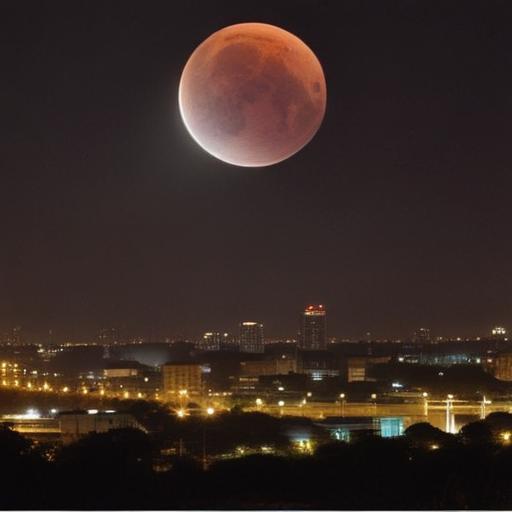Chennai skywatchers can look forward to a total lunar eclipse on the night of September 7. The eclipse is expected to be visible in full locally, beginning at 8:58 pm on September 7 and ending at 2:25 am on September 8 (local time). The moment of maximum eclipse is forecast for 11:41 pm on September 7.
Former TNSTC executive director I K Lenin Tamilkovan advised viewers to simply look to the eastern sky: “As long as the sky is clear, you can view it safely with the naked eye. No telescope or special equipment is required.” The Tamil Nadu Science and Technology Centre (TNSTC) may arrange a public viewing on its campus.
How the eclipse works: A lunar eclipse happens when the Sun, Earth and Moon line up so Earth blocks direct sunlight from reaching the Moon. Light that does reach the Moon has passed through Earth’s atmosphere, which bends and scatters shorter (bluer) wavelengths and allows longer (redder) wavelengths through — giving the fully eclipsed Moon its characteristic reddish “blood moon” appearance.
Phases to watch
– Penumbral phase: the Moon enters Earth’s faint outer shadow; this subtle dimming is hard to notice without optical aid.
– Partial phase: Earth’s darker central shadow (the umbra) begins to cover the Moon and the change becomes clearly visible to the naked eye.
– Totality: the entire Moon sits within the umbra and takes on the reddish tint; this is the most striking phase.
Visibility and future events
The event will be observable across large parts of the globe between roughly 9:57 pm and 12:22 am, including Europe, Asia, Australia, Africa, Alaska, the eastern tip of South America and many ocean and polar regions. The next total lunar eclipse will occur on March 3, 2026, but only its partial phase will be visible from India since the Moon will be rising there as the eclipse ends, according to S Soundararajaperumal, another former TNSTC executive director.
Practical tips and additional notes
– No eye protection is needed for lunar eclipses (unlike solar eclipses).
– Choose a location with a clear view of the eastern horizon and as little light pollution as possible.
– Binoculars or a small telescope will enhance surface detail and color, and a camera with manual settings or a smartphone on a tripod can capture good images during totality.
– Check local weather forecasts and TNSTC or local astronomy groups for scheduled public viewings or outreach events.
Short summary
Chennai will witness a full total lunar eclipse starting 8:58 pm on Sept 7 and peaking at 11:41 pm, with the event ending at 2:25 am on Sept 8; it will be safe to view with the naked eye and may be celebrated with public viewings.
Hopeful note
Events like lunar eclipses offer an inexpensive, shared chance to connect with science and community—ideal moments for families, schools and amateur astronomy groups to gather, learn and be inspired by the sky.
